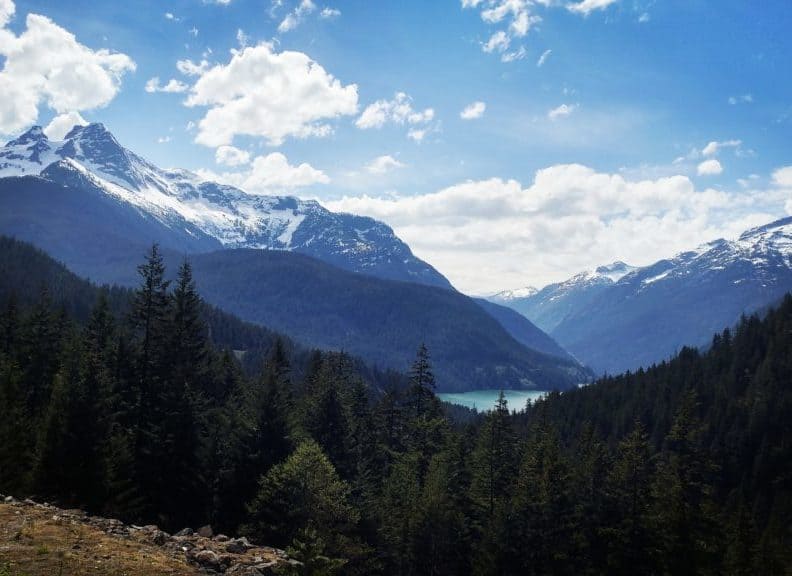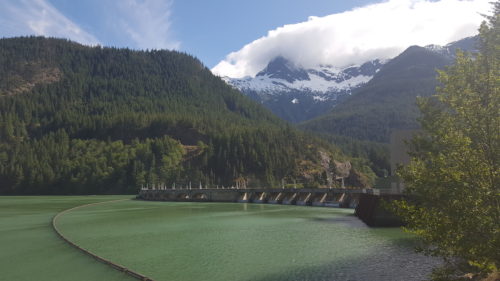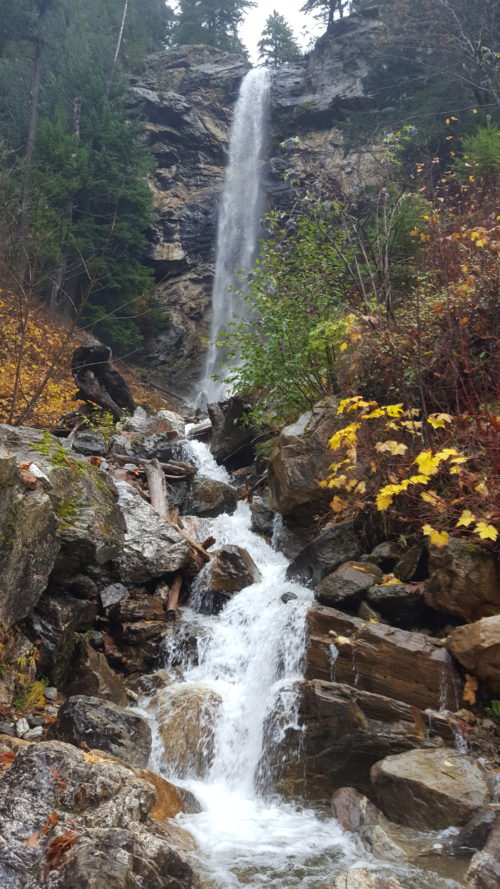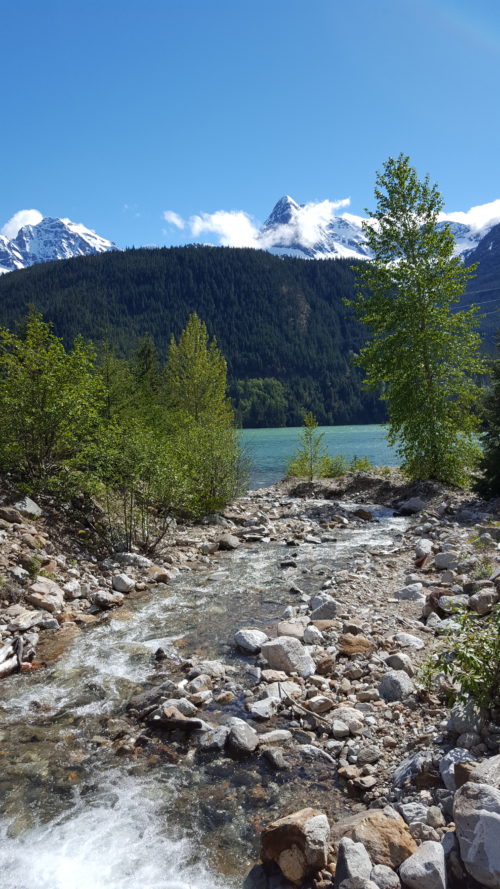
Our Water, Your Future: The Story of Climate Change and the Skagit River
By Jihan Grettenberger, graduate student in the Institute’s 16th cohort.
What do you love about the North Cascades and the Skagit Valley?
I love the burning feeling in my legs as I hike up the switchbacks on the trails that travel through thick forests of Douglas Firs, Western Hemlocks, and cedars. The sounds of the forest bring me bliss. The birds calling in the distances, the winds rushing over tree tops, and the buzz of bees pollinating plants. Most importantly I am in awe by the abundance of water. In the spring, the North Cascades fills with raging creeks from snowmelt and from lookout points I can see snow covered peaks. I know summer is coming when Diablo Lake changes from a greyish blue to a vibrant aquamarine color.

Diablo Dam with Pyramid Peak in the background. Photo courtesy of Jihan Grettenberger
How important is water in the North Cascades?
The North Cascades is water rich and named after all of the cascades that flow through the landscape. In the winter, snow piles up on the mountaintops; in the spring the snowpack melts, supplying water to the streams; in the summer glacier melt feeds our alpine lakes and dam reservoirs. The rainy fall then replenishes our dry summer soils and increases the flows in our rivers.
Thanks to our abundant water supply and diverse ecosystems, the North Cascades and Skagit Valley have all five native Pacific salmon species. Eagles soar through the sky, ospreys hunt, and wolverines dig deep dens in the snow. When the supply and timing of water changes in the mountains, it also changes the watershed. People, agriculture, hydroelectric production, plants, and creatures, all depend on reliable water sources to thrive.


Looking up to Sourdough Waterfall in the Fall (top) and Sourdough Creek flowing into Diablo Lake in the spring (bottom). Photo courtesy of Jihan Grettenberger
What will happen to the water supply in the North Cascades as temperatures climb?
As temperatures continue to rise in the North Cascades due to anthropogenic caused climate change, there are shifts in the hydrology. While the overall quantity of precipitation is not expected to change much, there will be changes in the timing of the precipitation. What are current and predicted hydrological changes in the North Cascades and the upper Skagit River?
- Winter rain: Currently in the winter, mountains receive precipitation in the form of snow. The snow then melts in the springtime, providing a steady flow to the streams and rivers. Predictions for 2020’s, 2040’s to 2080’s are a shift to rain in the winter instead of snow. This will directly affect the quantity of snowpack and the snow available in the springtime. Already, USGS data of water flowing into the Ross Reservoir show peaks in water supply during the winter months due to rain, something that was historically atypical.
- Snowpack: Why is snowpack in the Skagit watershed important? The snowmelt feeds the streams and rivers in the spring and parts of summer while providing cold water for salmon and other aquatic species. The snowpack has declined 23% during 1930-2007 due to anthropogenic climate change and will continue to decrease. The decrease in snowpack will impact the water quantity for our tributaries and rivers.
- Glaciers: The Skagit is the most glaciated watershed in the lower 48; with more than 300 glaciers in the North Cascades, equivalent to 42 square miles. The glaciers are a valuable source of cold water and nutrients. It is the glacier till (rock sediment) that gives Diablo Lake the aquamarine color. What will happen to the water supply when the glaciers are no longer there? In the dry, hot summers, which are expected to become hotter due and dryer to climate change, the glacier water provides 6-18% of the runoff to the Skagit River.
- Flooding: As a result of more heavy precipitation events, there will be increased flooding. Seattle City Light’s dams on the Skagit River will help mitigate some of the flooding right below the dams; however, they will not mitigate floods in the lower Skagit Valley, affecting communities and agriculture.

A view of Diablo Lake from up on Sourdough Mountain Photo courtesy of Jihan Grettenberger
Climate change is here and evidence of change is all around us in the mountains. Essential lifestyle changes to minimize impact requires us to drive less, pay extra on our electricity bills for renewable energy, eat less meat, conserve water, reduce our waste, and educate others about our impacts, but this is not enough! The eleventh hour is upon us and now is the time for us to speak to our political representatives to advocate for policies that reduce global greenhouse gas emissions. Local organizations also need our support. In Skagit and Whatcom counties, groups such as the Skagit Climate Science Consortium, Skagit Fisheries Enhancement Group, Skagit Conservation District, and Sustainable Connections are working hard to reduce greenhouse gases and mitigate climate change impacts. We can no longer wait. What can you do to help protect our diverse, magical ecosystems in Washington?

